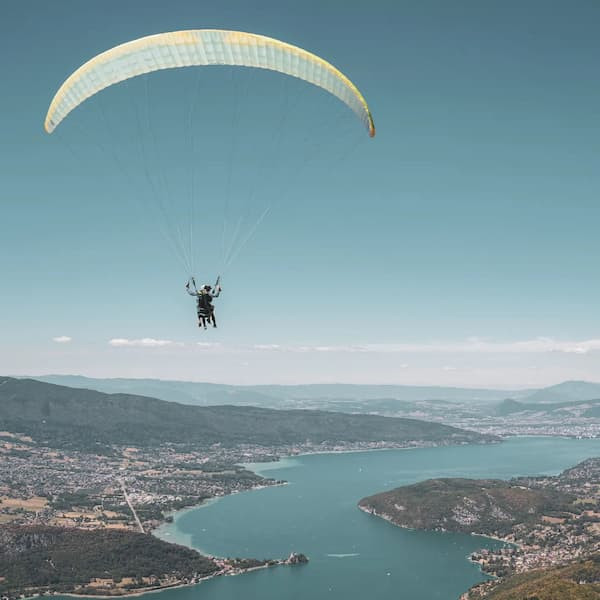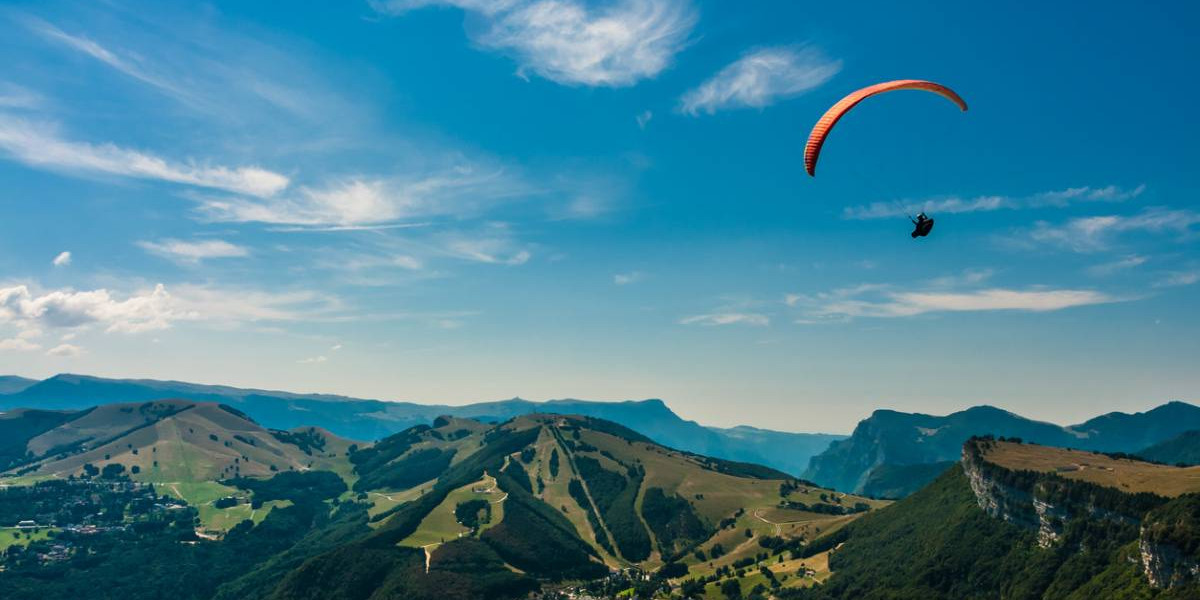Like skydiving and hang-gliding, paragliding is an aerial sport that is attracting more and more enthusiasts around the world. Experienced paragliders dream of mastering two fairly complex manoeuvres in the air: the SAT and the helicopter. Mastering these advanced manoeuvres improves your overall piloting skills and can also be useful in paragliding competitions.
SAT paragliding
The term "SAT" stands for Spiral Accelerated Turn. It is an aerobatic manoeuvre invented by Raul Rodriguez in 1999. He named the technique after his group of paragliders, the Safety Acro Team. Mastering the SAT is an important objective for most paragliding pilots. It forms the basis for performing other advanced manoeuvres such as :
- Asymmetric SAT,
- Tumbling
- Rythmic SAT.
Here, the pilot must create a spiral that places the centre of rotation between him and the glider, precisely at the level of the line cone. The axis of rotation is vertical. This means that the pilot moves backwards and turns in reverse, while the glider turns and flies forwards. The best weather conditions for SAT paragliding are clear, sunny skies. Similarly, wind speeds should not exceed 20 km/h. In the test phase, a SAT can be done between 5 and 10 metres above the ground.
You should choose very robust gliders that are compatible with a high wing loading. This will minimise the risk of breakage due to the centrifugal force generated. The pilot must also be able to develop great arm strength to guide the glider as it rotates.
You need to master the timing to enter SAT. Entering too early reduces the amount of energy received by the glider, leading to the risk of riser twisting or big cravats. If the pilot leaves his body in the initial position on exit, there is a risk of entering a very steep spiral (Nose Down Spiral).
If you want to master the SAT in paragliding, choose a certified professional to help you achieve your goal. At Adrénaline Parapente, our professional paragliding instructors are fully conversant with the different types of paragliding practice and will be able to give you the advice and tips you need every time. With the rigorous supervision of Adrénaline Parapente's professionals, discover these practices during your sensations baptism so that you can enjoy even more the joys of your favourite aerial sport.
Helicopter paragliding
Helicopter paragliding is an aerobatic manoeuvre also known as a "perfect spin". It owes its name to the fact that the pilot rapidly rotates the wing in a movement similar to that of a helicopter propeller. More precisely, the pilot must keep the wing rotating around an imaginary vertical axis. The stalled part of the glider must remain in a stabilised stall throughout the manoeuvre. The pilot maintains half a wing in forward and half a wing in reverse, taking care to open the canopy completely vertically.
The rotation around the yaw axis must be rapid to stabilise the manoeuvre. This allows the pilot and wing to move vertically through the air. To perform a left-hand helicopter, the left side of the wing flies backwards and the right side flies forwards. For this manoeuvre, you need to choose a wing with a wing loading that is not too high to reduce the speed of rotation. It generally takes about a year's work to correctly master the aerobatics of helicopter paragliding.
Mastering the synchronisation of the paraglider's two half-wings is essential, because there are many risks if you make a mistake. These include
- oblique attacks
- cravats
- autorotation
- twists,
- surges with the possibility of falling into the canopy.
Before trying to master the helicopter in paragliding, reinforce the technical basics of executing spins with backward and forward exits. Parachuting with the brakes, controlled reverse and a restrained release are all skills that you will need to gradually master if you are to achieve your objective.
For safety reasons during the manoeuvre, the instructor should also teach you a few things about twisting with a paraglider. For initial training, an aerobatic altitude of between 3 and 5 metres is recommended to avoid injury in the event of a fall. Mastering the helicopter in paragliding is essential if you want to learn to perform other aerial tricks such as the Misty Flip, Cowboy or Corkscrew.
Why learn SAT and helicopter paragliding?
The SAT and the helicopter are two advanced manoeuvres to master if you want to considerably improve your paragliding skills. You can also explore new possibilities in free flight by learning these two aerobatic manoeuvres. These two manoeuvres are very often part of the events on offer at paragliding competitions. Learning these complex manoeuvres is reserved exclusively for experienced paragliders who have already mastered all the fundamentals of their sport.
These are not aerial acrobatics that can be mastered overnight. It can take months or even years. You need discipline, patience and rigour as you learn. It's also a good idea to choose officially certified experts to lead your learning. The instructors in our organisation, which is accredited by the Fédération française de Vol libre (FFVL), will be able to give you sound advice on safe and responsible SAT and helicopter paragliding.


